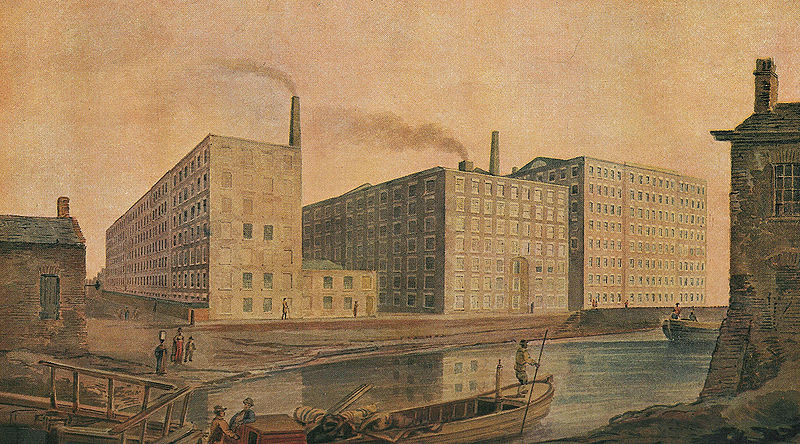As people and governments across the globe feel the growing pressure of climate change, PhD candidate Safya Morshed shares her research into a period of historical changes in climate in India, and their possible impact on governments’ relations with its people.
The Mughal Empire of seventeenth-century India struggled with famine, peasant rebellion, and war, as well as enduring a ‘Little Ice Age’ from 1600-1670. Do the abnormal weather patterns of the seventeenth century explain a relationship between these three circumstances? The historical chronology I establish with my datasets suggests they did.
In establishing what I believe is the first quantified timeline of seventeenth-century Mughal Empire famines and major peasant rebellions, my novel dataset speaks to whether overreach of the Mughal state contributed to famine and peasant rebellion, whether war caused the famine and wave of peasant rebellions, and whether the climate shocks of the seventeenth century were responsible for catalysing it all.
Mughals attributed famines to increased political instability after the 1650s, where the movement of troops could result in raids and crop destruction. But climate historians have noted abnormal weather patterns between 1600-1670, with especially poor weather around 1630. If peasant rebellions increased more in the 1630s than 1650s, then it is more plausible they did so because of climate.
For my research, I developed datasets for peasant rebellions and famines. Using centralised, contemporary state histories, I recorded the number, size, type, and date of conflicts which from 1555 to 1680. As peasant rebellions tended to be recorded in less detail, I estimated rebellion sizes by ranks, using a series of proxies to understand the size of rebellions. One proxy, for instance, was the status of the officer sent to put down the rebellion. If a higher-level government official was sent to put down a rebellion, it indicates the rebellion was more significant. If the emperor personally went to put down the rebellion, it would receive the highest rank of 5. Difference in rank indicates an exponential difference. I also reconstructed famine data for the empire using Abha Singh’s records of famines from contemporary histories. With both I can observe the extensive and intensive features of peasant rebellions, and how closely associated those measures are with climate change.
We can see in Figure 1 a substantial increase in the frequency of famines: between 1630-1670 for practically half the years there are famines recorded, compared to only ten in the entire preceding seventy-five-year period, 1555-1630. The number of provinces affected by these famines also seem to have increased. Around the same time, the intensity of peasant rebellions increased substantially, where there are seven substantial rebellions (above rank 3) between 1630-1680 compared to only two between 1555-1630. Famine and rebellion seem to go hand-in-hand.

Figure 1: Number of rebellions (by rank) per decade and number of provinces hit by famine per year.
Source: Constructed from Mughal Conflict Database. Famine data from Abha Singh.
Keep in mind that the rank-size of rebellions means they were exponentially larger: where a rank 4 rebellion of 5,000 people would have been five times larger than a rank 3 rebellion of 1000 people, and a rank 5 rebellion of 20,000 people was four times larger than a rank 4 rebellion. Clearly there was a substantial shift in the size of peasant rebellions around the same period where the state experienced more famines, which coincides with the Little Ice Age identified by climate historians.
The timeline suggests that the inhospitable climate of the seventeenth century initiated the spate of peasant rebellions, which prevented revenue collection for an economy quite dependent on agrarian taxes. Moreover, for a state that was increasingly engaged in larger conflicts with enormous armies, peasant flight made it difficult to feed soldiers during times of war.
Famines also triggered peasant migrations, leading to structural changes in the economy. Peasants joined zamindars, which organised for local security and resisted paying taxes to the central government. In the face of increased scarcity and the limited capacity of the state to provide employment or famine relief, large numbers of peasants joined zamindar militias for security. Bolstered by larger peasant armies, zamindars were able to better resist tax payment, further limiting the state’s ability to collect taxes, and worked to protect peasants from plundering soldiers.
Figure 2 shows the percentage of rebels motivated by taxation by decade, as was attributed by the chroniclers in the histories. Much of this dataset refers to zamindar rebels of the period. That the biggest jump in the number of tax motivated rebels comes in the 1630s perhaps first indicates a response to those famines, though the increased rate remains for the remainder of the century. The Mughal governors and commanders on the ground were not unaware or unresponsive to these changes. Recognising the importance of the peasantry, they relied on direct negotiations with the peasant population as a way of preventing migration away from Mughal lands.

Source: From the Participants Table within the Official Histories database. Taken from the 393 rebels for which the sources give information of cause of rebellion. This is inferred data based on chroniclers’ views.
These findings are lessons for what modern governments may face as global climate continues to change over the next few decades. My research revises the history of peasant rebellions during the Mughal Empire. My data show the catalysing event was the Little Ice Age that began in the 1630s. Famines triggered mass peasant movement and membership in tax-resisting rebel groups, which prevented revenue collection for an economy which relied heavily on agrarian taxes. These changes posed new structural challenges to the state unlike what it had ever seen before, restricting its fiscal capacity, and potentially spurring a decentralisation of power to the zamindars. It is difficult to assess the success of Mughal policy responses, though they clearly believed increasing peasant security was the best preventative measure.




